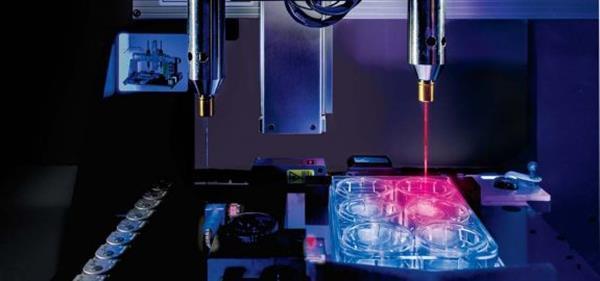IDC Forecasts Asia-Pacific 3D-Printing Spending to Reach $3.6 Billion by 2018

The latest IDC forecast from the IDC Worldwide Semiannual 3D Printing Spending Guide expects Asia/Pacific spending on 3D printing (including hardware, material, software, and services) to reach $3.6 billion by 2021 with a five-year compound annual growth rate (CAGR) of 22.4 percent. APEJ (Asia-Pacific, excluding Japan) is one of the three largest regions along with the United States and Western Europe to deliver 18 percent of the total 3D-printing spending worldwide throughout the 2017-2021 forecast period, according to IDC.
3D-printing related services (consulting services, systems integration services, and on-demand part printing services) and material spending combined will deliver nearly 45 percent of the total spending in the region throughout the forecast period. Purchase of software will trail behind in the overall market with five-year CAGR of 26.9 percent.
“China is the force behind APEJ growth. The Chinese government is in support of the industry and multiple 3D-printing action plan and fiscal supports are seen in place. As results, it boosted the 3D printing uses and spending in the country with continuous interest and rising maturity,” said Mun Chun Lim, market analyst of IDC Asia/Pacific’s Imaging, Printing and Document Solutions Research.
Discrete manufacturing is the dominant industry in APEJ, with spending to be nearly $1.1 billion in 2018. This industry is expected to remain the largest spending in the region throughout the forecast period, reaching $1.7 billion in 2021. The education and healthcare industries come in behind the discrete manufacturing industry, and which will account 37 percent of the overall spending in total across the region in 2021.
“Manufacturers in APeJ have started to evaluate and implement additive manufacturing. Coupled with government push in advanced manufacturing, discrete manufacturing industry will continue to dominate majority of the spending in the region,” added Lim. “Education remains to be the focus in majority of the countries across the region while healthcare industry is gaining traction with rising demand of customized medical solutions and increasing spending power among patients in the region.”
Leading uses for 3D printing in discrete manufacturing include 3D-printing: prototypes, molds, and aftermarket parts. These three use cases will account for 68 percent of total spending across the discrete manufacturing industry in 2018. In education, learning or research activities are the dominant applications On the other hand, dental objects, surgical models, medical support objects represent a wide percentage of 3D-printing applications in the healthcare-provider industry. These applications are expected to combine and deliver $427 million in 2021, an increase of 140 percent over 2017.
The industries that will see the fastest growth in 3D-printing spending over the five-year forecast are: the telecommunications industries (50.2 percent CAGR) and resource industries (44.0 percent CAGR).
“As we are gearing towards industry 4.0 era, 3D printing is poised to transform the manufacturing process and how things are made. The advent of 3D printing opens up endless possibilities and unleashing disruptive power in global supply chain. With on-going development, we will see penetration of 3D printing in other industries, with more innovative use cases developed,” added Lim.
IDC’s Worldwide Semiannual 3D Printing Spending Guide quantifies the opportunity for 3D printing, which enable the creation of objects and shapes made through material that is laid down successively upon itself from a digital model or file. Spending data is available for 15 use cases across 19 industries in nine geographic regions. Data is also available for 3D-printing hardware, materials, software, and services. Unlike any other research in the industry, IDC says the comprehensive spending guide was designed to help IT decision makers to clearly understand the industry-specific scope and direction of 3D printing expenditures today and over the next five years.
More Resources
- January 2018: IDC Forecasts Worldwide Spending on 3D Printing to Reach Nearly $12 Billion in 2018
- November 2017: Ricoh Launching New High-Strength, Heat-Resistant Material for its 3D Printer
- October 2017: HP: Full-Color 3D Printing, 3D-Metal Printing for Manufacturing on the Way
- August 2017: HP Inc.: How 3D Printing is Set to Change Manufacturing
- May 2017: Mimaki’s 3D Printer Can Produce Over 10 Million Different Color Combinations
- May 2017: Konica Minolta Extends 3D-Printing Offerings for Education with Dremel 3D Printers, MyStemKits
- April 2017: Wohlers Report Shows ‘Vibrant New Business Activity in 3D Printing,’ but Softened Growth Worldwide
- March 2017: Auto-Maker Daimler to Install Ricoh Rapid-Prototyping 3D Printer
- February 2017: IDC: 3D Printing Will Hit ‘Mainstream’ in Asia-Pacific Region Next Year
- October 2016: Gartner: Worldwide Shipments of 3D Printers to Grow 108 Percent in 2016
- May 2016: HP Inc. Blog: How HP’s 3D Printing Will Re-Shape the Future, from Manufacturing, to Entire Economies

You must be logged in to post a comment.